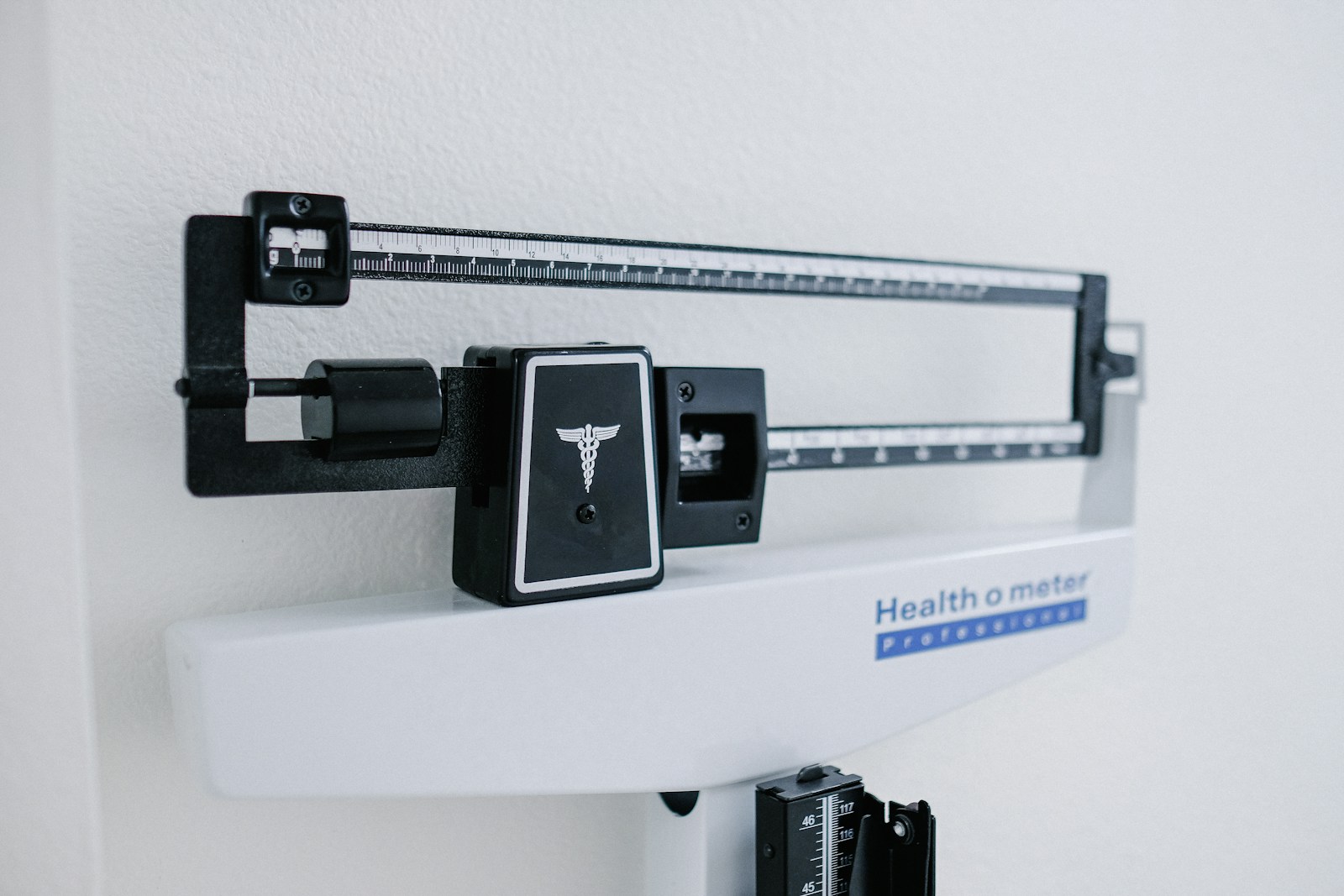For decades, Body Mass Index (BMI) has been the standard tool for assessing whether an individual’s weight is within a healthy range. BMI is simple to calculate, involving only height and weight, but it has several limitations. Despite its widespread use, BMI fails to account for body composition, fat distribution, and other critical factors that contribute to health risks. In recent years, a newer metric known as A Body Shape Index (ABSI) has been introduced, offering a potentially more accurate measure of health by including waist circumference in its formula. This article will explore why ABSI may be a more useful and reliable tool than BMI for assessing health risks and outline the science behind each measurement.
Understanding BMI: Its Advantages and Limitations
Body Mass Index (BMI) is calculated by dividing a person’s weight (in kilograms) by the square of their height (in meters). The result is a single number that places an individual into one of four categories: underweight, normal weight, overweight, or obese. While BMI is widely used because it’s easy to calculate, it has considerable limitations, particularly when it comes to assessing overall health risks.
Limitations of BMI
- Ignores Fat Distribution: BMI does not account for where fat is stored in the body. Numerous studies show that visceral fat (fat stored around internal organs, primarily in the abdominal area) is more harmful than subcutaneous fat, which is found under the skin. People with higher levels of visceral fat have a greater risk of metabolic diseases, even if their BMI is within a normal range.
- Does Not Distinguish Between Muscle and Fat: BMI does not differentiate between muscle mass and fat mass, meaning that athletes or individuals with high muscle content may be categorized as overweight or obese, even if they have low body fat.
- Overlooks Body Shape and Proportion: BMI treats all body shapes and types as if they were the same, which can lead to inaccuracies. People with the same BMI can have very different health outcomes due to variations in body composition and shape.
- Poor Indicator for Elderly Populations: For older adults, BMI may not be as reliable because muscle mass decreases with age, and fat tends to accumulate around the abdomen. As a result, older adults may appear to have a “normal” BMI despite having high levels of body fat and increased health risks.
- Fails to Predict Cardiovascular and Metabolic Risk: Research shows that BMI alone is not an accurate predictor of cardiovascular diseases, diabetes, and other metabolic conditions. People with the same BMI may have different risks based on how their fat is distributed and other factors that BMI doesn’t capture.
Due to these limitations, researchers have sought other measurements that provide a more complete picture of health. A Body Shape Index (ABSI) is one such alternative that addresses many of BMI’s shortcomings.
Introducing ABSI: A Body Shape Index
A Body Shape Index (ABSI) was introduced by Dr. Jesse Krakauer and Dr. Nima Krakauer in 2012 as a tool to improve health risk assessments by incorporating waist circumference. The formula for ABSI is as follows:
ABSI = waist circumference / (BMI2/3 × height1/2)In contrast to BMI, ABSI takes into account waist circumference, which provides an indicator of visceral fat—the fat surrounding internal organs. By including waist circumference in the calculation, ABSI addresses some of the critical flaws of BMI, such as fat distribution and body composition. ABSI is now used to assess body shape and central obesity, offering a potentially more accurate reflection of health risks associated with body fat.
How ABSI Works
ABSI provides a metric that adjusts for height and weight but places a greater emphasis on waist circumference. This focus allows ABSI to detect the health risks associated with abdominal obesity, which is strongly linked to metabolic syndrome, cardiovascular disease, and type 2 diabetes. The larger an individual’s waist circumference relative to their height and weight, the higher their ABSI, indicating a higher risk of health complications.
Higher ABSI values generally correlate with greater health risks, even if an individual’s BMI is within the “normal” range. By providing a nuanced assessment that considers both body weight and fat distribution, ABSI offers a more comprehensive picture of an individual’s health risks.
Why ABSI May Be a Better Health Indicator than BMI
ABSI addresses many of the limitations of BMI and provides a more accurate assessment of health risks associated with body composition and fat distribution. Here are some key reasons why ABSI may be a superior metric for evaluating health.
1. Accounts for Visceral Fat, Not Just Total Body Mass
One of the most significant advantages of ABSI is that it emphasizes waist circumference, which reflects the amount of visceral fat an individual has. Visceral fat, stored around internal organs, is highly active metabolically and produces inflammatory substances that increase the risk of conditions such as cardiovascular disease, type 2 diabetes, and some cancers. BMI, on the other hand, only considers total body weight, ignoring where fat is stored.
By including waist circumference, ABSI offers a direct measure of abdominal fat, providing a more accurate prediction of health risks. Studies show that visceral fat, even in small amounts, is more detrimental than fat stored elsewhere in the body, so ABSI’s ability to target this type of fat makes it a valuable health tool.
2. Improves Health Risk Predictions
Research has shown that ABSI is more effective than BMI at predicting all-cause mortality and the risk of metabolic diseases. High ABSI scores correlate with increased mortality and morbidity rates, even among individuals with normal BMI. This suggests that ABSI provides a more accurate assessment of long-term health risks, particularly those associated with obesity-related complications.
For example, a study published in the journal PLOS One found that ABSI was a better predictor of mortality risk than BMI in both men and women. Individuals with high ABSI values were found to have higher mortality rates than those with high BMI values. This improved accuracy makes ABSI a valuable metric for health professionals seeking to assess patients’ health risks more comprehensively.
3. Differentiates Between Muscle and Fat
Unlike BMI, which treats all weight as equal, ABSI distinguishes between muscle and fat by focusing on waist circumference. Muscle mass is denser than fat and does not carry the same health risks, so individuals with high muscle mass but low body fat can be inaccurately categorized as overweight or obese by BMI. ABSI helps correct this by emphasizing the distribution of body fat, particularly around the abdomen, which is more closely related to health risks than total body mass.
By accounting for fat distribution rather than overall weight, ABSI can provide a more accurate health assessment for athletes, bodybuilders, and individuals with high muscle mass. This correction avoids the common problem of BMI overestimating obesity in individuals with high muscle content.
4. Provides a More Comprehensive View of Body Composition
ABSI captures an individual’s body shape and proportion by factoring in waist circumference, offering a more complete view of body composition. BMI doesn’t account for how weight is distributed across different parts of the body, so people with similar BMI values can have very different body compositions and associated health risks. ABSI addresses this by highlighting the importance of central obesity, which is a stronger predictor of health issues than overall body mass.
This nuanced view is particularly valuable for assessing the health of people with similar BMI but differing waist circumferences. For example, two people with the same BMI but different ABSI scores may have vastly different health risks due to differences in abdominal fat, which ABSI is specifically designed to measure.
5. Useful for Older Adults and Different Body Types
BMI’s limitations are particularly pronounced in older adults, whose body composition often shifts due to muscle loss and fat redistribution. ABSI is a more adaptable metric, as it considers waist circumference, which tends to increase with age, even in individuals who may not gain weight. This ability to account for age-related changes in body composition makes ABSI a more suitable measurement for older adults, whose health risks may not be accurately reflected by BMI alone.
Additionally, ABSI’s ability to adjust for differences in body shape makes it useful for people of various body types and ethnic backgrounds. Studies show that different populations may carry fat differently, and ABSI’s emphasis on abdominal fat can provide a more individualized assessment.
6. Correlates Better with Cardiovascular and Metabolic Health
Waist circumference is closely related to cardiovascular and metabolic health because it indicates visceral fat, which is linked to insulin resistance, inflammation, and hypertension. Since ABSI incorporates waist circumference, it has a stronger correlation with conditions like type 2 diabetes, metabolic syndrome, and cardiovascular disease than BMI.
Several studies have confirmed that ABSI is a better predictor of cardiovascular risk factors than BMI. For instance, a study published in The American Journal of Clinical Nutrition found that ABSI had a stronger association with cardiovascular risk factors, such as high blood pressure and elevated cholesterol levels, than BMI. This association underscores ABSI’s value as a tool for assessing cardiovascular health risks more accurately.
Practical Steps for Using ABSI Instead of BMI
If you’re interested in switching from BMI to ABSI for health assessment, here are some practical steps:
- Calculate Your ABSI: The ABSI formula may look complex, but you can use online calculators by entering your height, weight, and waist circumference. These calculators provide an ABSI score and an interpretation of what the score means in terms of health risks.
- Compare Your ABSI to Health Risk Categories: Like BMI, ABSI scores can be categorized into low, moderate, and high-risk ranges. A high ABSI score generally indicates a higher risk of health complications, while a lower score suggests a lower risk.
- Monitor Changes Over Time: ABSI is a valuable tool for tracking changes in body composition over time. By regularly measuring your waist circumference, height, and weight, you can monitor any changes in your ABSI score and use it as feedback to adjust your health habits.
- Use ABSI as Part of a Comprehensive Health Assessment: ABSI provides more detailed information than BMI but should be used in conjunction with other health indicators, such as blood pressure, cholesterol levels, and lifestyle factors, to get a complete view of health.
- Consult with a Healthcare Professional: If you’re unsure about how to interpret your ABSI score or have questions about how to incorporate it into your health assessment, consult a healthcare professional. They can provide personalized guidance and help interpret your results in the context of your overall health.
Conclusion
While BMI has been a popular tool for assessing weight-related health risks, it has significant limitations that may overlook critical aspects of health, particularly fat distribution. A Body Shape Index (ABSI) offers a more accurate assessment of health risks by incorporating waist circumference, a better indicator of visceral fat and central obesity, which are closely linked to cardiovascular and metabolic health issues. ABSI provides a nuanced view of health risks, accommodating different body types, muscle mass, and age-related changes that BMI fails to capture.
For those seeking a more comprehensive and individualized approach to health assessment, ABSI may be a superior choice. Incorporating ABSI as part of a holistic health evaluation can empower individuals to better understand their unique health risks and make informed choices to improve their well-being. By moving beyond BMI and considering factors like fat distribution, ABSI represents a step toward a more accurate and personalized approach to health and fitness.




